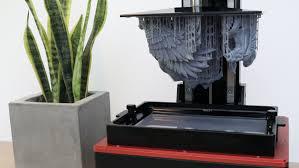In the fast-evolving world of 3D printing, one term that frequently captures attention is 3D printer resin. Known for its ability to create highly detailed and durable prints, resin has become a cornerstone of additive manufacturing, particularly in industries that demand precision. Whether you are an engineer, designer, hobbyist, or manufacturer, understanding how 3D printer resin works and what makes it unique can help you choose the right material for your projects. Unlike traditional filament-based 3D printing, resin printing unlocks a new dimension of smooth surfaces, intricate details, and professional-grade finishes.
 But what exactly is 3D printer resin, how does it work, and why is it becoming such a game-changer? Let’s dive deep into its properties, uses, and advantages.
But what exactly is 3D printer resin, how does it work, and why is it becoming such a game-changer? Let’s dive deep into its properties, uses, and advantages.
What Is 3D Printer Resin?
3D printer resin is a liquid photopolymer that solidifies when exposed to specific wavelengths of light, typically ultraviolet (UV). This process, known as photopolymerization, is the foundation of resin-based 3D printing technologies such as SLA (Stereolithography), DLP (Digital Light Processing), and LCD resin printing.
Unlike FDM (Fused Deposition Modeling) printers that use plastic filaments like PLA or ABS, resin printing produces objects with higher accuracy, smoother finishes, and finer details. This makes it especially popular in industries such as dentistry, jewelry, prototyping, and even miniatures for gaming.
Types of 3D Printer Resin
Not all resins are created equal. Manufacturers have developed multiple formulations of UV resin to meet specific needs, ranging from strength to flexibility.
Standard Resin
Standard resin is the most commonly used material in resin 3D printing. It provides excellent detail and smooth surfaces, making it ideal for prototypes, models, and decorative items.
Tough and Durable Resin
For applications that require strength and impact resistance, tough resins are engineered to mimic ABS-like properties. These are used in functional parts and mechanical components.
Flexible and Elastic Resin
Flexible resin offers rubber-like properties, making it suitable for applications that demand bending, stretching, or compression, such as gaskets, grips, and medical devices.
Dental and Biocompatible Resin
Dentists and medical professionals often use biocompatible resin to create surgical guides, dental aligners, and prosthetics. These resins meet strict safety standards and are revolutionizing healthcare prototyping.
High-Temperature Resin
When projects involve exposure to high heat, high-temperature resins are the go-to choice. These materials withstand extreme conditions without warping.
How Does Resin 3D Printing Work?
The process of using 3D printer resin involves layering and curing. A printer’s light source (laser, projector, or LCD screen) selectively cures the liquid resin layer by layer. The build platform then gradually lifts, allowing the next layer to be formed. This continues until the entire 3D model is completed.
After printing, the object typically undergoes post-processing steps. These include rinsing in isopropyl alcohol to remove uncured resin, followed by additional curing under UV light to strengthen the final product. This post-curing step is critical for achieving maximum durability and stability.
Why Choose 3D Printer Resin Over Filament?
When comparing resin vs filament 3D printing, the choice depends on the desired outcome. Resin printers excel in precision, surface smoothness, and intricate details, while filament printers are better for larger, less detailed, and cost-effective prints.
For industries like jewelry design, dental modeling, and miniature production, resin is unmatched in delivering accuracy and fine features that filament cannot replicate. On the other hand, FDM printing might be more practical for large-scale functional parts.
Applications of 3D Printer Resin
The versatility of resin makes it useful in countless fields. In healthcare, surgeons use biocompatible resin for patient-specific surgical models. In product design, engineers use tough resins to prototype durable parts before mass production. Hobbyists and artists enjoy its ability to produce lifelike miniatures with intricate details, while jewelers rely on castable resin for creating molds in investment casting.
Additionally, industries that demand rapid prototyping benefit significantly from resin 3D printing, as it reduces turnaround times while ensuring high fidelity to the original digital design.
Advantages and Considerations of 3D Printer Resin
The biggest advantage of 3D printer resin lies in its detail and accuracy. Prints have smooth surfaces, sharp edges, and professional-grade finishes that often require little to no sanding. Resin also provides a wide range of material properties, from flexible to rigid and heat-resistant.
However, there are considerations. Resin tends to be more expensive than filament, and handling requires safety precautions since liquid resin can be toxic before curing. Users must wear gloves and work in well-ventilated spaces. Post-processing also takes additional time compared to filament-based printing.
Despite these challenges, the benefits often outweigh the downsides, particularly for industries that prioritize quality and detail.
The Future of Resin 3D Printing
As 3D printing technology advances, resin formulations are becoming safer, stronger, and more versatile. Eco-friendly resins made from plant-based materials are gaining traction, addressing environmental concerns. Faster curing methods and larger build volumes are also expanding the potential of resin-based printing, making it more accessible to hobbyists and professionals alike.
With continuous improvements, 3D printer resin is poised to revolutionize not just prototyping but also full-scale production across various industries.
Conclusion
So, what is 3D printer resin and why is it so important in modern manufacturing? Simply put, it is a material that combines precision, detail, and versatility in ways that filament-based printing cannot match. From dental prosthetics and jewelry molds to flexible prototypes and high-temperature parts, resin is unlocking new possibilities for creators and industries worldwide.
While it requires careful handling and comes with a higher cost, the benefits of 3D printer resin—including accuracy, professional finishes, and diverse applications—make it an indispensable material in the future of 3D printing. For anyone looking to explore the next level of additive manufacturing, resin is not just an option; it is a gateway to innovation.

